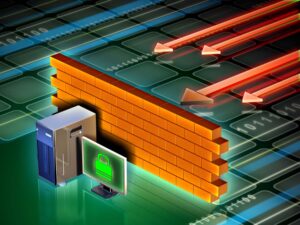When you think about it, that’s a fairly difficult question to answer isn’t it?
Most of us in ‘The Industry’ know what a computer is, how it works, and how to make it behave when it decides to act up. I could describe a computer and how it works in such a way that while accurate, wouldn’t bring the average PC (or MAC for that matter) user any closer to enlightenment.
I have spoken with many users over the years of varying technical prowess. By either assisting with remedying a problem that their computer is experiencing, or by giving advice to someone who is looking into purchasing a computer. In both cases, the analogies that I can best come up with to describe a computer and how it works is to imagine a person in an office sitting behind a desk. Let me explain…
A computer is made up of several parts that can be described as parts of an office. The person sitting at the desk would be the processor. The faster the person at the desk (processor) can complete its immediate task, the faster he/she can complete their work. The surface of the desk would be the computers’ memory or RAM. The larger the desk (memory/RAM) the more papers (programs) can be worked on at once. Therein lies the relationship between a computer’s processor and memory. The faster the person behind the desk (processor) can work and the more things they can work on at once (memory/RAM) will directly affect the overall performance of the system.
But where are all of the files and papers stored that this person is so diligently working to complete? Every office needs a filing cabinet, right? Imagine the filing cabinet in the office as the computer’s Hard Drive. The lager the filing cabinet (Hard Drive) the more files and papers (data, programs, etc.) can be saved and accessed. And just like an office can have multiple filing cabinets, a computer can have multiple hard drives to add storage space for files and programs.
There are more intricate parts to a computer that allow it to function, but those are the basics. All of which can be illustrated by a particular portion of, or something that could be associated with an office. For instance, the Front Side Bus speed could be equated to your (processor) arms. The more quickly you can pick up papers from your desk (programs and files stored in memory) work on them (processor speed) and then put them back on your desk, the faster you can complete your work. For that matter, there could be more than one of you (dual core – 2, quad core – 4 processors) working on the same work at the same time.
When people have questions about computers, how they function, or if their computer is having performance issues I will sometimes use the above analogy to help them understand what it is they are trying to understand. This can help explain in simple terms what it is that their computer is doing that it shouldn’t be, or what it isn’t doing that it should be. ‘The Office’ illustration hasn’t failed me yet; and I would love to hear stories about how you or someone you’ve heard describes a computer.
written by: Wes Hall, Support Engineer




